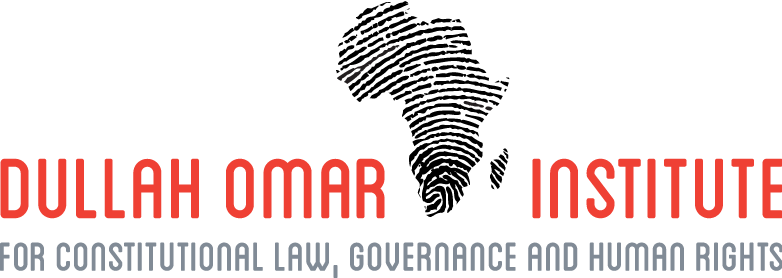In 1999 the relevant sections of the Correctional Services Act was promulgated to provide for the establishment of the Judicial Inspectorate of Prisons. The Independent Prisons Visitor, as provided for in the Act, is the main mechanism of the Judicial Inspectorate to hear and address the complaints of prisoners. With hundreds of Independents Prison Visitors appointed by 2003, this paper reviews the effectiveness of the system to address the complaints of prisoners.
Whilst the South African legislation makes ample provision for non-custodial sentencing options, practice reveals that these sentencing options are severely under utilized. Research in a number of jurisdictions reveals a system beset by practical problems, lack of knowledge, infrastructure problems, and attitudinal obstacles. Practical recommendations are provided on promoting non-custodial sentencing options as a result of the research.
This paper reviews the effectiveness of the Judicial Inspectorate in fulfilling this mandate as an oversight structure. Report by Saras Jagwanth
This report provides a detailed analysis of the legal mandate and powers of JICS. A number of recommendations are made to enhance its independence, efficiency and effectiveness. Report by Saras Jagwanth
The report provides a detailed analysis and evaluation of the Independent Prison Visitors (IPV) system of the Judicial Inspectorate for Correctional Services (JICS). Recommendations focus on the appointment process of IPVs; the performance management system for IPVs; the quality of feed-back given to prisoners; the training of IPVs; Interaction between IPVs and DCS officials; additional IPVs or the allocation of more time; Interaction with prisoners and work outside mandated duties, and political oversight. Report by Jacqui Gallinetti
The presentation provides an overview of the research conducted to assess the efficacy of the Judicial Inspectorate for Prisons in South Africa.
Prisoner's rights litigators face serious challenges when they take on the Department of Correctional Services. There is a lack of respect for the Rule of Law within prison services, which means existing rules are disobeyed, court orders ignored and corruption and misconduct condoned or covered up; representatives of prison services often fear taking responsibility and therefore often fail to act, passing on cases to court in an attempt to "pass the buck"; the leadership in the Department often does not know what is going on in individual prisons; the public and the newspapers have little sympathy for prisoners and there is little publicity for the plight of prisoners and consequently representatives in the prison service feel that they can get away with actions that would otherwise not be tolerated; and conditions of overcrowding in the prisons are often caused by problems in the criminal justice system and must be addressed if one wants to improve the conditions under which prisoners are kept. This means that at present litigation against the Department of Correctional Services seldom brings lasting changes in the conditions of prisoners and/or in the way prison officials and the political leadership in the Department operate. Despite these problems, prisoners' rights litigation could be a powerful weapon deployed to address the lack of respect for the Rule of Law, which lies at the heart of the problems faced by the Department. Other non-legal strategies could be used alongside litigation strategies to place ever more pressure on relevant officials and the political leadership in the Department. Such pressure would then force the prison leadership to act because inaction would become impossible.
The period 1994 to 2002 in South African Correctional Services history is reviewed in this paper and was prompted by the apparent confusion characterizing correctional policy during this period. During this period substantial policy changes were adopted, such as the privatization of prisons, but with limited debate and oversight. The paper records for historical purposes important trends and mistakes made during this period, but also serve as a clear reminder of the importance of transparent knowledge-based policy development.
South African ratified the UN Convention Against Torture in December 1998 and played a significant role in the drafting of the Optional Protocol to the Convention against Torture (OPCAT). The UN General Assembly adopted the OPCAT in December 2002 and since February 2003 the OPCAT has been open for signature. By October 2005 there have been 48 signatures and 13 ratifications. The Protocol requires 20 ratifications to become binding on UN members. The OPCAT is a powerful international human rights instrument as it provides for national and international visiting mechanisms to all places where people are detained. This includes prisons, police cells, immigration centres, and psychiatric hospitals, amongst others. Regular visits to such facilities have been proven as an effective measure against torture and the ill treatment of people deprived of their liberty. This paper investigate the implication for South Africa should it sign and ratify the OPCAT.
The restricted and hidden nature of the prison regime was dramatically apparent in apartheid South Africa, where prisons shunned outside scrutiny and engagement in all correctional matters. The correctional system was an inherent part of the political apparatus that upheld the apartheid state. Prisoners were segregated according to race, and the staff hierarchy echoed similar racial lines. The adoption of the Bill of Rights in firstly the interim and then the final Constitution in 1993 and 1996 finally established the right of prisoners to be treated with human dignity and set out the mandatory minimum rights of people deprived of their liberty and those held in custody. These guideline principles, later amplified in the Correctional Services Act of 1998, seek to define how the Department of Correctional Services (DCS) should implement its correctional mandate in keeping people in custody. Recognising the importance of accountability and oversight mechanisms in respect of public institutions, the Constitution created vehicles for civilian oversight. Mechanisms were also created to focus exclusively on prisons. A decade after this transition, it is timeous to evaluate how these mechanisms are functioning, and to what extent they are serving their envisaged purpose.
Africa’s prisons are a long-standing concern for rights defenders given the prevalence of rights abuses, overcrowding, poor conditions of detention and the extent to which the criminal justice system is used to target the poor. The paper surveys 24 southern and east African countries within the context of COVID-19. Between 5 March and 15 April 2020 COVID-19 had spread to 23 southern and east African countries, except Lesotho. The overwhelming majority of these countries imposed general restrictions on their populations from March 2020 and nearly all restricted visits to prisons to prevent the spread of the coronavirus. The pandemic and government responses demonstrated the importance of reliable and up to date data on the prison population, and any confined population, as it became evident that such information is sorely lacking. The World Health Organization recommended the release of prisoners to ease congestion, a step supported by the UN Subcommittee on Prevention of Torture. However, the lack of data and the particular African context pose some questions about the desirability of such a move. The curtailment of prison visits by external persons also did away with independent oversight even in states parties to the Optional Protocol to the Convention against Torture (OPCAT). In the case of South Africa, prison monitors were not listed in the ensuing legislation as part of essential services and thus were excluded from access to prisons. In the case of Mozambique, it was funding being placed on hold by the donor community that prevented the Human Rights Commission from visiting prisons. The COVID-19 pandemic has highlighted long-standing systemic problems in Africa’s prisons. Yet African states have remained remarkably reluctant to engage in prison reform, despite the fact that poorly managed prisons pose a significant threat to general public health care.
Africa’s prisons are a long-standing concern for rights defenders given the prevalence of rights abuses, overcrowding, poor conditions of detention and the extent to which the criminal justice system is used to target the poor. The paper surveys 24 southern and east African countries within the context of COVID-19. Between 5 March and 15 April 2020 COVID-19 had spread to 23 southern and east African countries, except Lesotho. The overwhelming majority of these countries imposed general restrictions on their populations from March 2020 and nearly all restricted visits to prisons to prevent the spread of the coronavirus. The pandemic and government responses demonstrated the importance of reliable and up to date data on the prison population, and any confined population, as it became evident that such information is sorely lacking. The World Health Organization recommended the release of prisoners to ease congestion, a step supported by the UN Subcommittee on Prevention of Torture. However, the lack of data and the particular African context pose some questions about the desirability of such a move. The curtailment of prison visits by external persons also did away with independent oversight even in states parties to the Optional Protocol to the Convention against Torture (OPCAT). In the case of South Africa, prison monitors were not listed in the ensuing legislation as part of essential services and thus were excluded from access to prisons. In the case of Mozambique, it was funding being placed on hold by the donor community that prevented the Human Rights Commission from visiting prisons. The COVID-19 pandemic has highlighted long-standing systemic problems in Africa’s prisons. Yet African states have remained remarkably reluctant to engage in prison reform, despite the fact that poorly managed prisons pose a significant threat to general public health care.









